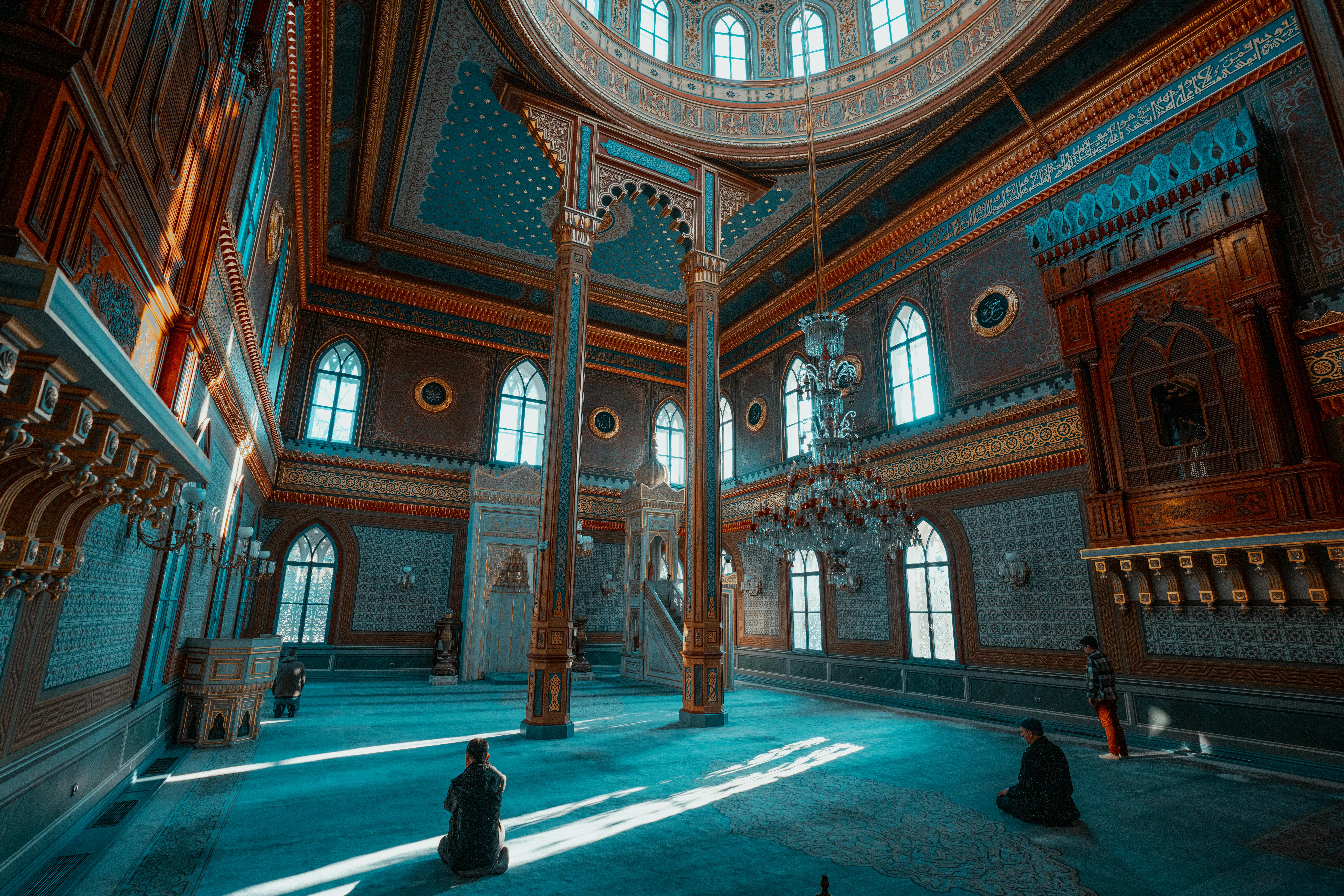Eco-architecture is transforming how we build sacred spaces, blending ancient wisdom with sustainable innovation to create environments that honor both spirituality and our planet.
🌿 The Spiritual Dimensions of Sustainable Architecture
The intersection of ecology and spirituality has never been more critical than in our current era. As we face unprecedented environmental challenges, architects and spiritual communities worldwide are reimagining sacred spaces through the lens of sustainability. This movement represents more than just green building practices; it embodies a profound shift in how we understand our relationship with the natural world and the divine.
Sacred architecture has always sought to create spaces that elevate human consciousness and connect us to something greater than ourselves. Today’s eco-architects are discovering that sustainable design principles naturally align with the timeless goals of sacred space creation. When we build with respect for ecological systems, we create environments that resonate with the fundamental interconnectedness that lies at the heart of most spiritual traditions.
The concept of harmony in design extends beyond aesthetic considerations. It encompasses the entire lifecycle of a building, from material sourcing to construction methods, energy consumption, and eventual decomposition. When applied to sacred spaces, this holistic approach creates environments that don’t just house spiritual practice but actively embody spiritual values.
Ancient Wisdom Meets Modern Innovation 🏛️
Traditional sacred architecture from cultures around the world offers invaluable lessons for contemporary eco-design. Ancient builders intuitively understood principles that modern science is only now fully appreciating. The orientation of temples to solar patterns, the use of local materials, and passive climate control systems were standard practices long before sustainability became a global concern.
Indigenous communities have maintained building traditions that work in harmony with their environments for millennia. The earthen mosques of West Africa, the wooden temples of Japan, and the stone circles of prehistoric Europe all demonstrate sophisticated understanding of site-specific design and material efficiency. These structures often lasted centuries with minimal environmental impact, standing as testimonies to the durability of sustainable construction.
Modern eco-architects are rediscovering these time-tested approaches and enhancing them with contemporary technology. Advanced climate modeling software, innovative bio-materials, and renewable energy systems allow us to achieve even greater harmony between built environments and natural ecosystems. The key lies in respecting traditional wisdom while embracing technological progress that serves sustainability goals.
Materials That Connect Heaven and Earth
The choice of building materials profoundly impacts both environmental footprint and spiritual atmosphere. Natural materials like wood, stone, bamboo, and earth-based products carry inherent qualities that synthetic alternatives cannot replicate. These materials possess textures, scents, and thermal properties that create sensory experiences conducive to contemplation and spiritual connection.
Rammed earth construction is experiencing a renaissance in sacred architecture. This ancient technique creates massive walls with excellent thermal mass, reducing energy needs while providing acoustics ideal for meditation and ceremony. The earthen walls themselves become visual reminders of our connection to the ground beneath our feet and the elements that sustain us.
Living materials are also gaining prominence. Green roofs and living walls not only provide insulation and air purification but transform buildings into habitats that support biodiversity. Imagine a meditation hall where practitioners are surrounded by flourishing plant life, where the boundary between inside and outside dissolves into a seamless expression of ecological unity.
Energy Systems as Spiritual Practice 💡
How we power our sacred spaces reflects our values and commitment to future generations. Renewable energy systems offer more than practical benefits; they transform the very nature of our relationship with power and consumption. Solar panels, wind turbines, and geothermal systems allow communities to generate clean energy, reducing dependence on destructive fossil fuel extraction.
The integration of solar technology into sacred architecture can be particularly meaningful. The sun has been venerated across cultures throughout history as a source of life and divine presence. Modern photovoltaic systems allow us to harness this ancient source of power in service of contemporary spiritual practice, creating a direct link between celestial energy and earthly needs.
Energy efficiency itself becomes a form of spiritual discipline when we design spaces that require minimal resources to maintain comfortable conditions. Passive solar design, strategic window placement, thermal mass, and natural ventilation work together to create environments that breathe with natural rhythms rather than fighting against them through mechanical systems.
The Sacred Geometry of Sustainable Design
Sacred geometry has guided spiritual architecture for millennia, encoding mathematical relationships that humans find intrinsically harmonious. These same principles often align perfectly with sustainable design strategies. The golden ratio, found throughout nature, can inform building proportions that are both aesthetically pleasing and structurally efficient.
Circular and organic forms minimize surface area relative to volume, reducing material needs and heat loss. Mandala-inspired floor plans create communal spaces that foster connection while optimizing resource distribution. Spirals, fractals, and other natural patterns can guide both macro-level site planning and micro-level detail work, creating environments that feel coherent across all scales.
Modern parametric design software allows architects to explore complex geometries that would have been impossible to construct with traditional methods. These tools enable the creation of structures that optimize for multiple variables simultaneously—structural integrity, material efficiency, acoustic performance, natural lighting, and spiritual symbolism can all be balanced in service of holistic design goals.
🌍 Water: The Sacred Element in Sustainable Design
Water management represents both a practical necessity and a powerful spiritual symbol. Sacred spaces throughout history have incorporated water features for ritual purification, acoustic enhancement, and contemplative focus. Contemporary eco-architecture approaches water as a precious resource to be collected, used mindfully, and returned clean to natural systems.
Rainwater harvesting systems can provide all the water needs for many sacred spaces, reducing municipal water demands while creating opportunities for ritual engagement with precipitation cycles. Visible cisterns and water channels make the entire water cycle transparent to building users, fostering awareness of consumption patterns and seasonal variations.
Natural wastewater treatment systems, such as constructed wetlands, transform a typically hidden infrastructure into beautiful, educational landscapes. These living filtration systems process water through natural biological processes, creating habitat for wildlife while demonstrating principles of regeneration and renewal central to many spiritual traditions.
Designing for Community and Contemplation
Sustainable sacred spaces must serve the practical needs of communities while providing environments conducive to spiritual practice. This dual mandate requires thoughtful space planning that accommodates gatherings, education, service activities, and individual contemplation within resource-efficient footprints.
Multi-functional spaces that adapt to different needs throughout the day and week maximize building utilization, reducing the overall square footage required. Movable partitions, flexible seating arrangements, and versatile lighting systems allow a single room to transform from a meditation hall to a community meeting space to an educational venue, all without requiring separate facilities for each function.
Outdoor spaces deserve equal consideration as interior environments in eco-sacred architecture. Courtyards, gardens, and natural amphitheaters extend the functional capacity of buildings while eliminating the environmental impact of conditioned interior space. These transitional zones blur the boundaries between human-made and natural environments, creating opportunities for spiritual practice that engages directly with weather, seasons, and living ecosystems.
The Economics of Sacred Sustainability 💰
One common misconception holds that sustainable building is prohibitively expensive. While some green technologies require upfront investment, the lifecycle costs of eco-architecture consistently favor sustainable approaches. Energy-efficient buildings reduce operating expenses dramatically, and durable natural materials often outlast cheaper synthetic alternatives.
Many sustainable strategies actually reduce construction costs when implemented thoughtfully. Using local materials eliminates transportation expenses and supports regional economies. Passive design strategies reduce or eliminate mechanical system needs. Simple, elegant forms require less complex engineering than buildings that fight against climate conditions.
Community participation in construction can further reduce costs while strengthening social bonds and ensuring the building truly serves its users’ needs. Natural building techniques like cob, straw-bale, and cordwood construction are accessible to non-professionals, allowing communities to invest labor rather than capital. The act of building together becomes a spiritual practice in itself, embodying values of cooperation and stewardship.
Case Studies: Sacred Spaces Leading the Way
Around the world, pioneering projects demonstrate the potential of eco-sacred architecture. The Green Mosque in Dubai achieves net-zero energy consumption while accommodating thousands of worshippers, proving that sustainability scales to monumental architecture. Buddhist meditation centers in Thailand integrate traditional timber construction with modern solar technology, honoring heritage while embracing innovation.
Small-scale projects offer equally inspiring examples. Earth-sheltered meditation caves in New Mexico provide year-round comfort with virtually no energy input. Straw-bale churches in Canada demonstrate that even cold climates can be served by natural building techniques. These diverse projects share common threads: respect for place, mindful resource use, and recognition that built environments shape spiritual experience.
Indigenous communities are also reclaiming traditional building practices as acts of cultural preservation and environmental activism. Reconstructing longhouses, kivas, and ceremonial structures using ancestral methods reconnects people with heritage while demonstrating sustainable alternatives to industrial construction. These projects honor the past while providing blueprints for future development.
🌱 Biophilic Design and Spiritual Connection
Biophilic design—the integration of nature into built environments—aligns perfectly with the goals of sacred architecture. Research consistently shows that contact with natural elements reduces stress, improves cognition, and enhances overall wellbeing. For spiritual practice, these benefits translate to improved focus, emotional openness, and sense of interconnection.
Natural lighting strategies do more than reduce energy consumption; they connect interior spaces to the daily and seasonal rhythms that have structured human life throughout evolution. Skylights, clerestory windows, and light shelves bring dynamic, ever-changing illumination that artificial lighting cannot replicate. The quality of natural light affects mood, alertness, and our sense of time in ways that support contemplative practice.
Acoustics represent another dimension where natural materials excel. Wood, stone, and earth-based products create sound environments vastly different from those produced by synthetic materials. The resonance of natural materials supports both musical practice and the subtle sounds of silence that characterize deep meditation. Careful acoustic design can make even whispered prayers audible throughout a space while maintaining an atmosphere of peaceful quiet.
Certification Systems and Standards 📋
Various certification systems provide frameworks for sustainable building, though their applicability to sacred spaces varies. LEED (Leadership in Energy and Environmental Design), BREEAM, and Living Building Challenge offer different approaches to measuring and verifying sustainability. Understanding these systems helps communities make informed decisions while recognizing that the deepest values of sacred architecture may not fit neatly into standardized metrics.
Some emerging certification approaches specifically address sacred and culturally significant buildings. These frameworks acknowledge that preservation of spiritual function and symbolic meaning must be balanced with environmental performance. They also recognize that community wellbeing and social equity are inseparable from environmental sustainability.
Beyond formal certification, peer networks and knowledge-sharing platforms help sacred architecture projects learn from each other. Online forums, case study databases, and professional associations focused on green sacred spaces facilitate collaboration across traditions and geographies. This collective learning accelerates innovation while ensuring that hard-won lessons benefit the entire field.
🔮 The Path Forward: Integrated Design for Holistic Harmony
The future of sacred architecture lies in integrated design processes that consider spiritual, environmental, social, and economic factors simultaneously from project inception. This holistic approach requires collaboration among architects, spiritual leaders, community members, ecologists, and engineers. When diverse perspectives inform design from the beginning, the resulting spaces serve multiple needs without compromise.
Education plays a crucial role in advancing eco-sacred architecture. Architectural schools increasingly emphasize sustainable design, but few programs specifically address the unique requirements of sacred spaces. Developing specialized training that combines ecological building science with understanding of spiritual traditions will produce designers capable of serving this vital sector.
Policy and funding mechanisms must also evolve to support sustainable sacred architecture. Tax incentives, grants, and revolving loan funds specifically targeted at green religious buildings could accelerate adoption of best practices. Recognizing that places of worship serve public goods beyond their immediate congregations strengthens the case for public support of their sustainable development.
Beyond Buildings: Sacred Landscapes and Urban Ecology 🏙️
The principles of eco-sacred architecture extend beyond individual structures to entire sites and their relationships with surrounding communities. Sacred landscapes—designed outdoor environments for spiritual practice—offer opportunities to restore ecosystems while creating space for contemplation and ceremony. Meditation trails, labyrinth gardens, and forest temples demonstrate that some of the most powerful sacred spaces require minimal built infrastructure.
Urban sacred spaces face particular challenges and opportunities. In dense cities where green space is scarce, religious properties can serve as ecological oases that provide cooling, habitat, and community gathering places. Green roofs, permeable paving, and urban food forests transform sacred sites into environmental assets that benefit entire neighborhoods.
The concept of sacred extends to the broader landscape when we recognize that all of nature possesses intrinsic value worthy of reverence. This perspective, central to many indigenous and earth-based spiritual traditions, offers a powerful framework for environmental conservation. When forests, rivers, and mountains are understood as sacred, their protection becomes a spiritual imperative that transcends economic calculation.

Embodying Values Through Design Choices ✨
Every design decision in a sacred space communicates values to those who use it. Material choices, energy systems, water management, and waste handling all send messages about our priorities and understanding of our place in the world. Transparent, educational design that makes these systems visible and comprehensible transforms buildings into teaching tools that inspire sustainable living beyond their walls.
The aesthetics of sustainability deserve special attention in sacred architecture. While some early green buildings emphasized function over beauty, the most successful eco-sacred spaces demonstrate that environmental performance and aesthetic excellence are complementary rather than competing goals. Natural materials, honest expression of structure, and integration with site often produce buildings of profound beauty precisely because they embody coherence and integrity.
Ultimately, the harmony achieved in eco-sacred architecture reflects and reinforces spiritual understanding that humans and nature are not separate but intimately interconnected. These buildings don’t just house spiritual practice; they embody the recognition that caring for creation and nurturing spirit are inseparable aspects of meaningful human life. As we build for a sustainable future, sacred spaces lead the way by demonstrating that harmony in design creates beauty, functionality, and reverence in equal measure.
Toni Santos is an eco-spirituality researcher and planetary healing writer exploring how earth-based rituals, nature-centred philosophy and sacred ecology reconnect humanity with the living planet. Through his work on environment, consciousness and ritual, Toni examines how our relationship with Earth influences our awakening and actions. Passionate about land-wisdom, ritual practice and ecological integration, Toni focuses on how spiritual life can emerge from ecological awareness and how healing flows from land, water and community. His work highlights the union of ecology, mind and spirit — guiding readers toward a more grounded, relational, and sacred life. Blending ritual studies, environmental philosophy and ecological design, Toni writes about the human-earth story — helping readers understand how living systems, community and meaning intertwine in planetary healing. His work is a tribute to: The sacred connection between humanity and Earth’s living systems The power of ritual to rekindle land-memory and collective renewal The vision of ecology as sacred, relational and transformational Whether you are a ritual practitioner, ecological thinker or planet-healer, Toni Santos invites you to explore the path of planetary awakening — one ritual, one ecosystem, one transformation at a time.




